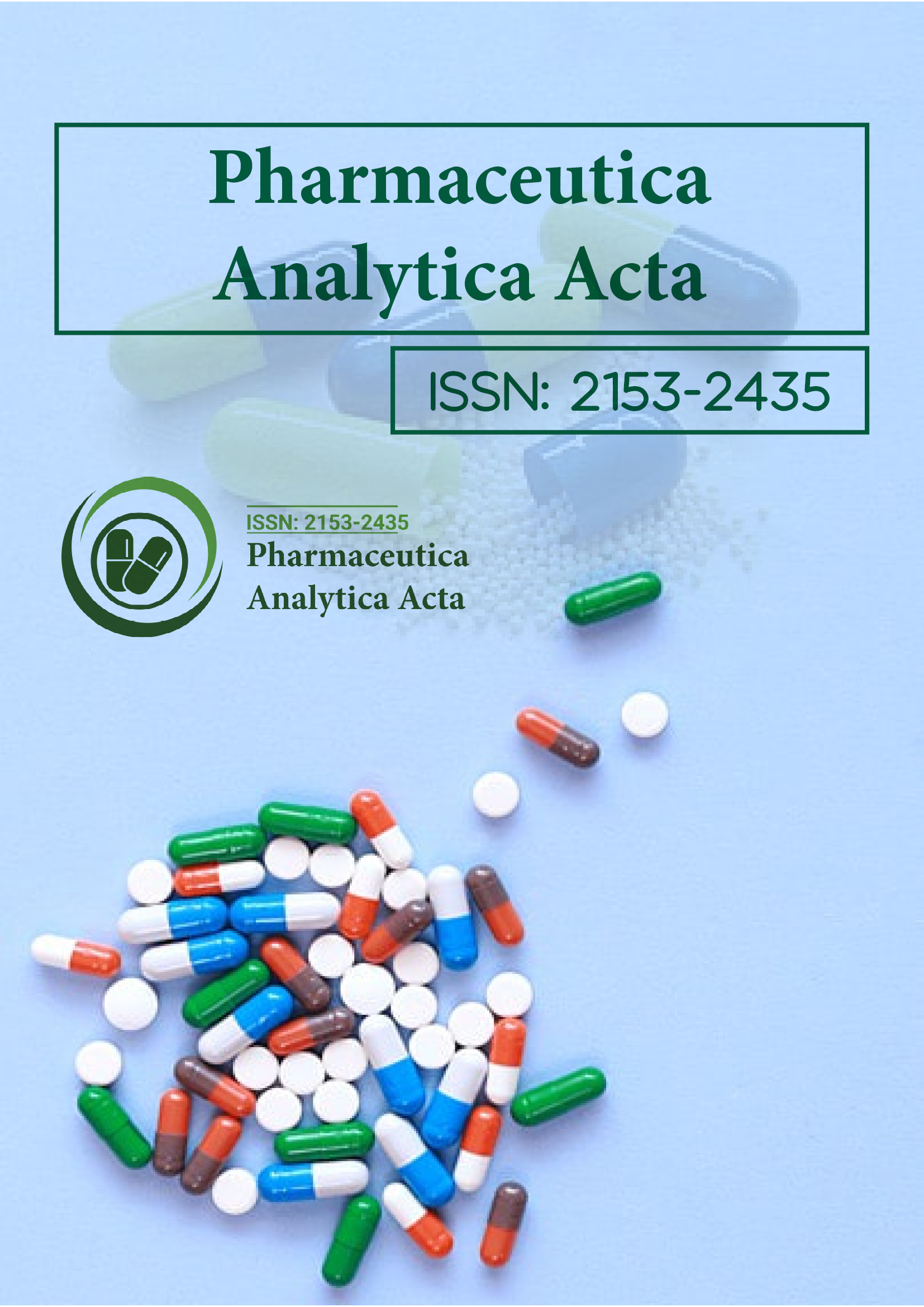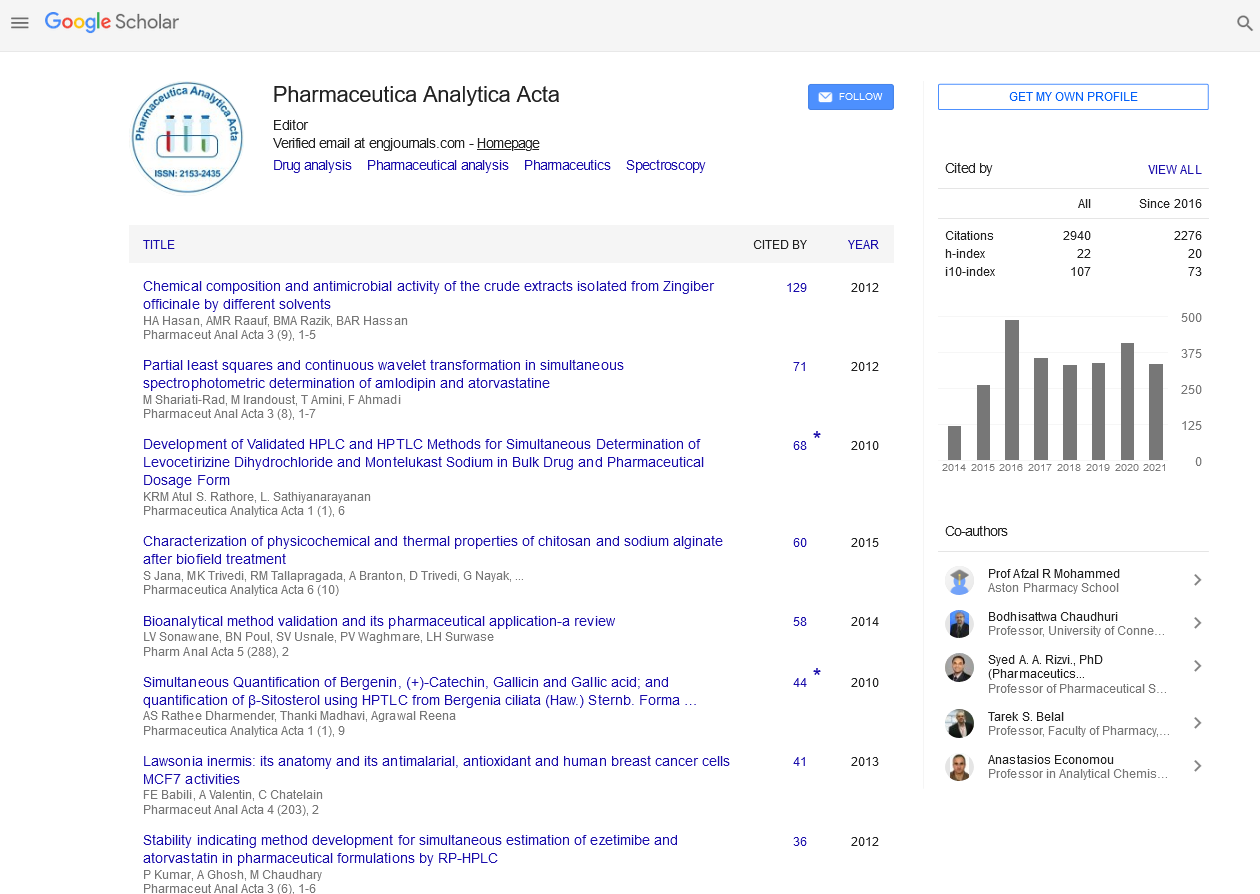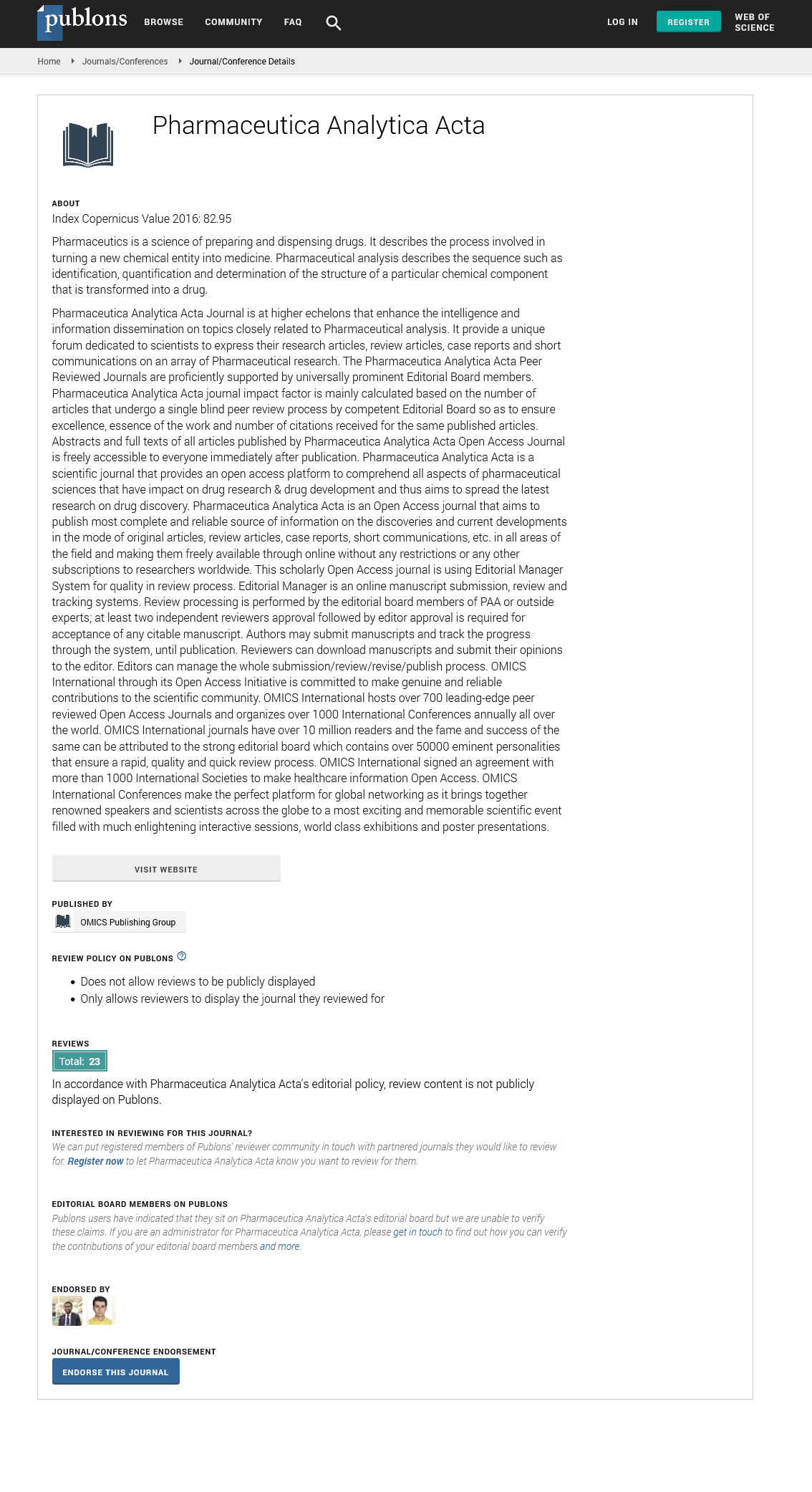Indexed In
- Open J Gate
- Genamics JournalSeek
- Academic Keys
- JournalTOCs
- The Global Impact Factor (GIF)
- China National Knowledge Infrastructure (CNKI)
- Ulrich's Periodicals Directory
- RefSeek
- Hamdard University
- EBSCO A-Z
- OCLC- WorldCat
- Publons
- Geneva Foundation for Medical Education and Research
- Euro Pub
- Google Scholar
Useful Links
Share This Page
Journal Flyer

Open Access Journals
- Agri and Aquaculture
- Biochemistry
- Bioinformatics & Systems Biology
- Business & Management
- Chemistry
- Clinical Sciences
- Engineering
- Food & Nutrition
- General Science
- Genetics & Molecular Biology
- Immunology & Microbiology
- Medical Sciences
- Neuroscience & Psychology
- Nursing & Health Care
- Pharmaceutical Sciences
Perspective - (2025) Volume 16, Issue 2
Transdermal Drug Delivery: Advantages and Opportunities for Improved Patient Compliance
Hafangle Carat*Received: 02-Nov-2023, Manuscript No. PAA-23-23711; Editor assigned: 06-Nov-2023, Pre QC No. PAA-23-23711 (PQ); Reviewed: 20-Nov-2023, QC No. PAA-23-23711; Revised: 01-Apr-2025, Manuscript No. PAA-23-23711 (R); Published: 08-Apr-2025, DOI: 10.35248/2167-1044.25.16.813
Introduction
Transdermal drug delivery, a method of administering medications through the skin, offers numerous advantages over traditional oral or injectable routes. It provides a controlled and sustained release of drugs avoids first-pass metabolism in the liver and reduces the potential for gastrointestinal side effects. Despite these advantages, transdermal drug delivery faces challenges in terms of drug formulation, permeation and patient compliance.
Description
The basics of transdermal drug delivery
Transdermal drug delivery systems consist of patches or gels that are applied to the skin. These systems release the medication at a controlled rate, allowing for consistent drug levels in the bloodstream. The skin's outermost layer, the stratum corneum, acts as a barrier and the drug must penetrate this layer to enter the systemic circulation.
Advantages of transdermal drug delivery
Consistent drug release: Transdermal patches provide a steady release of medication over time, ensuring a continuous therapeutic effect.
Avoidance of first-pass metabolism: Drugs absorbed through the skin bypass the liver's first-pass metabolism, which can alter the drug's effectiveness.
Reduced gastrointestinal side effects: Transdermal delivery minimizes gastrointestinal irritation and discomfort often associated with oral medications.
Ease of application: Transdermal patches are easy to apply and remove, making them patient-friendly.
Innovations in transdermal drug delivery
Nanotechnology: The use of nanoparticles, liposomes and microneedles allows for the delivery of a broader range of drugs, including macromolecules and biologics.
Microarray patches: Microneedle patches create tiny, painless punctures in the skin to facilitate drug delivery, improving patient acceptance.
Hydrogel formulations: Hydrogels offer a way to encapsulate drugs and control their release through the skin, ensuring consistent dosing.
Iontophoresis: This technique involves the application of a low electrical current to enhance drug permeation through the skin. It can be useful for specific medications.
3D printing: Customized drug delivery patches can be created through 3D printing, allowing for patient-specific dosing and formulations.
Transdermal combination products: Patches containing multiple drugs can be used to address complex medical conditions or improve patient compliance by reducing the number of separate medications.
Patient compliance and transdermal drug delivery
Patient compliance is a critical aspect of any drug delivery system, including transdermal methods. Non-compliance can lead to suboptimal therapeutic outcomes and increased healthcare costs.
Ease of use: Transdermal patches are simple to apply, and their extended-release nature reduces the need for multiple daily doses, making them a convenient option for patients.
Painless application: Microneedle patches and other innovations aim to make transdermal drug delivery painless, further improving patient acceptance.
Reduced side effects: Transdermal delivery can minimize gastrointestinal side effects, which can be a significant barrier to patient compliance with oral medications.
Customization: Tailoring drug delivery to the patient's needs through 3D printing and personalized formulations can improve compliance by accommodating individual preferences and requirements.
Combination products: Combining multiple drugs in a single transdermal patch can simplify the treatment regimen, making it easier for patients to manage complex medical conditions.
Conclusion
Transdermal drug delivery has made significant strides in addressing the challenges of drug permeation, formulation and patient compliance. It offers a promising approach to delivering a wide range of drugs, providing patients with convenient, painless and effective options for therapy. As research and innovation continue, transdermal drug delivery systems will likely play an increasingly important role in improving patient compliance and therapeutic outcomes in the field of medicine.Citation: Carat H (2025) Transdermal Drug Delivery: Advantages and Opportunities for Improved Patient Compliance. Pharm Anal Acta. 16:813.
Copyright: © 2025 Carat H. This is an open-access article distributed under the terms of the Creative Commons Attribution License, which permits unrestricted use, distribution, and reproduction in any medium, provided the original author and source are credited.


